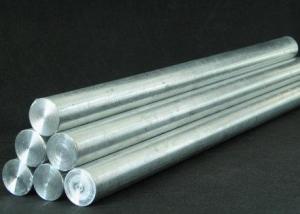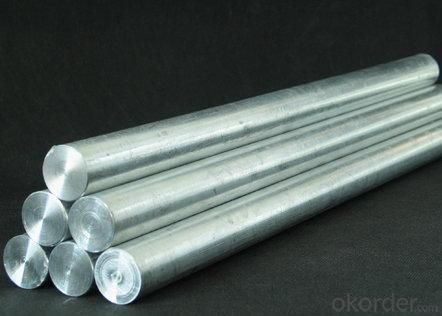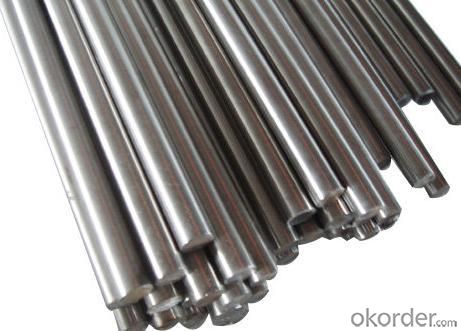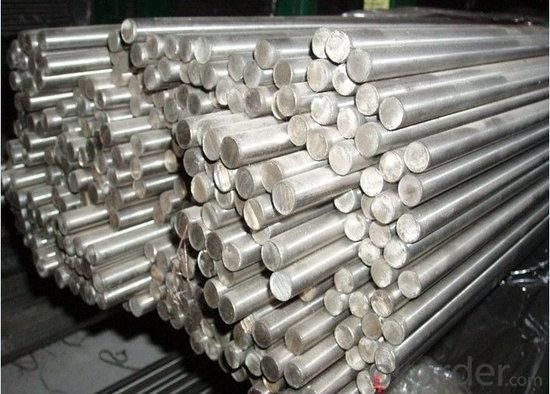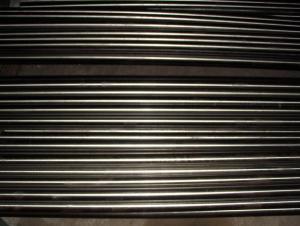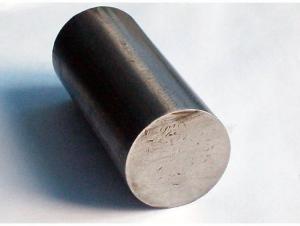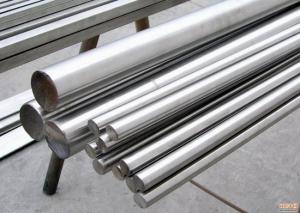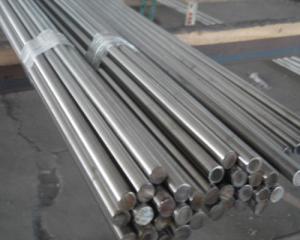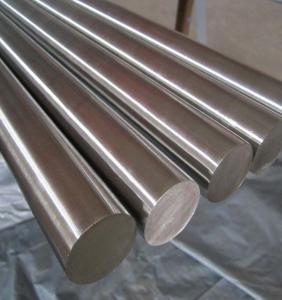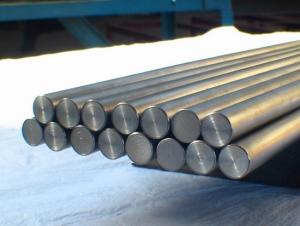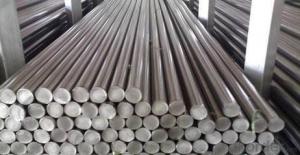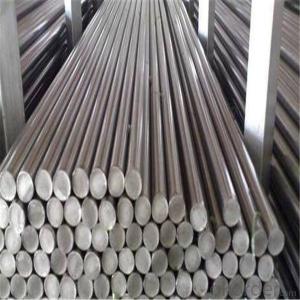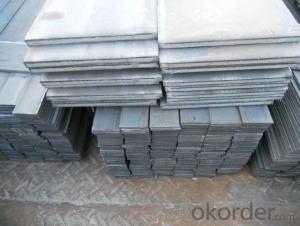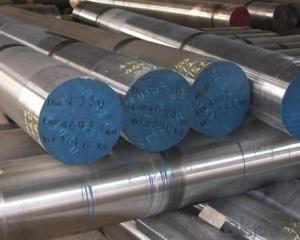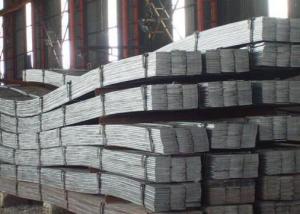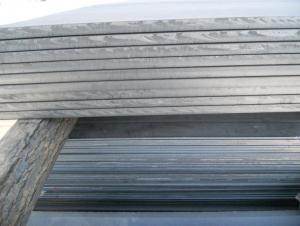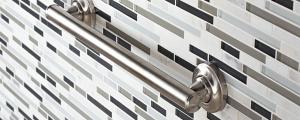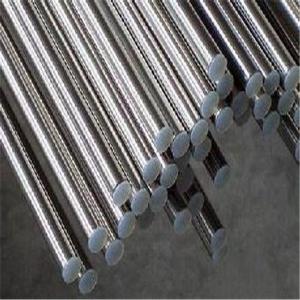Stainless Steel Bars
- Loading Port:
- Shanghai Port
- Payment Terms:
- TT or LC
- Min Order Qty:
- 10 Tons m.t.
- Supply Capability:
- 1000 Tons Per Month m.t./month
OKorder Service Pledge
OKorder Financial Service
You Might Also Like
Introduction of Stainless Steel Round Bright Bar:
Stainless steel is a production which not easy rust,acid resistance and corrosion resistance, so it is widely used in light industry, heavy industry, daily necessities and the decoration industry.my company long-term supply stainless steel porducts including: stainless steel sheet, stainless steel coil and stainless steel tube.
Details of Stainless Steel Round Bright Bar(Cold Drawing Polished):
*DIA 10mm to 130mm
*FORGE
*DIA 130mm to 300mm
*GB1220,ASTM A 484/484M, EN 10060/ DIN 1013
*DIA 3mm to 60mm
Main operation | Main steel grade | Available size(mm) | Monthly capacity(mt) | Length(mm) | |
OEM | Stainless steel | 40~500 | 1500 | 4000~8000 | |
Hot | 303 303Cu 304/L 310S 316/L 321 416 420 | 12 ~200 | 3000 | 4000~7000 | |
17-4PH WLA510 | 19~110 | 2000 | 4000~7000 | ||
ST Bar | 321 304/L 316/L 310S 17-4PH WLA510 | 19~110 | 2000 | 4000~7000 | |
CD Bar | Round bar | 303 303CU 304/L 316/L 416 420 17-4PH WLA510 | 4.76~100 | 500 | 2500~6500 |
Square bar | 303 303CU 304/L 316/L 416 17-4PH WLA510 | 4.76~75 | 180 | 2500~6500 | |
Hex bar | 303 303CU 304/L 316/L 416 17-4PH WLA510 | 4.76~75 | 180 | 2500~6500 | |
CG Bar | 303 303CU 304/L 316/L 416 420 17-4PH WLA510 | 4.76~100 | 500 | 2500~6500 | |
Features of Stainless Steel Round Bright Bar:
*Low density
*High specific strength
*High corrosion resistance
*Good thermal stability and plasticity
*It is widely applied for petroleum, chemical, mechanical and electrical, hardware, etc.
Quality assurance of Stainless Steel Round Bright Bar:
All of the products are detected by ultrasound making sure that no defects inside the products. Besides, chemical composition, mechanical properties and high-powered organization are also strictly controlled, ensuring our clients get the best products.
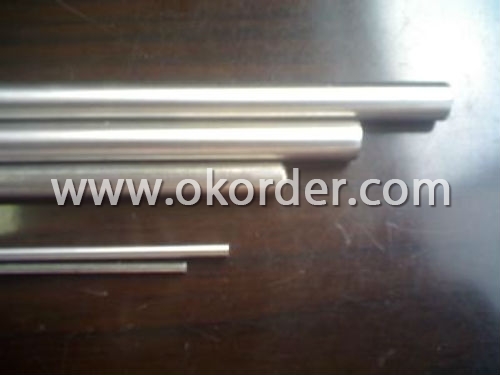
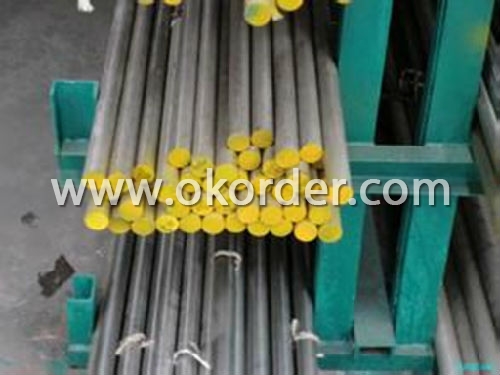
- Q: Are stainless steel bars suitable for industrial machinery?
- Indeed, industrial machinery finds stainless steel bars to be a fitting option. Renowned for its remarkable strength, durability, and resistance to corrosion, stainless steel emerges as an exceptional material selection for diverse industrial purposes. With the ability to endure substantial burdens, high temperatures, and unforgiving surroundings, stainless steel bars prove to be the ideal choice for machinery necessitating dependable and robust components. Moreover, stainless steel bars conveniently lend themselves to machining, welding, and shaping into various forms, thereby enabling flexibility in design and construction. In summary, stainless steel bars present impeccable mechanical properties and ensure long-lasting performance, thus establishing their suitability for industrial machinery.
- Q: Are stainless steel bars resistant to stress corrosion cracking?
- Yes, stainless steel bars are generally resistant to stress corrosion cracking. Stainless steel is known for its excellent corrosion resistance properties, which can be attributed to the presence of a high amount of chromium. Chromium forms a protective oxide layer on the surface of the stainless steel, which acts as a barrier against corrosive elements. This oxide layer is self-repairing and prevents the material from undergoing stress corrosion cracking. However, it is important to note that the resistance to stress corrosion cracking can vary depending on the specific grade of stainless steel and the environment in which it is used. Some grades of stainless steel are more resistant to stress corrosion cracking than others, and certain environments such as high chloride concentrations or acidic conditions can increase the susceptibility to stress corrosion cracking. To ensure maximum resistance against stress corrosion cracking, it is essential to select the appropriate grade of stainless steel for the specific application and consider the environmental factors that the material will be exposed to. Regular maintenance and proper handling of stainless steel bars are also important to prevent any potential stress corrosion cracking issues.
- Q: What are the different methods of testing stainless steel bars?
- To ensure the quality and performance of stainless steel bars, there are multiple testing methods available. Some commonly used techniques include: 1. Analyzing the chemical composition: This involves examining the composition of the stainless steel bars to ensure they meet the required specifications. It helps determine the presence and percentage of elements like carbon, chromium, nickel, and molybdenum. 2. Conducting mechanical tests: Various mechanical tests are performed to assess the strength, hardness, and ductility of the stainless steel bars. These tests include measuring tensile strength, yield strength, elongation, and hardness to ensure the bars can withstand their intended applications. 3. Performing visual inspections: A basic method of testing stainless steel bars is through visual inspection. This entails examining the bars for surface defects such as cracks, pits, or scratches. Visual inspection helps identify any visible imperfections that could impact the bars' performance or appearance. 4. Utilizing non-destructive testing (NDT): NDT methods are employed to assess the integrity of stainless steel bars without causing damage. Techniques like ultrasonic testing, magnetic particle testing, liquid penetrant testing, and eddy current testing are frequently used to detect internal or surface defects in the bars. 5. Conducting corrosion testing: Stainless steel is renowned for its corrosion resistance properties. Corrosion testing is performed to evaluate the bars' resistance to various corrosive environments. Tests such as salt spray testing, pitting corrosion testing, and intergranular corrosion testing are employed to assess the corrosion resistance of stainless steel bars. 6. Checking dimensions: This method involves inspecting the dimensions and tolerances of the stainless steel bars to ensure they meet the necessary specifications. It includes measuring the length, diameter, straightness, and surface finish of the bars using precision instruments. By employing these diverse testing methods, manufacturers and users can guarantee that stainless steel bars are of superior quality, fulfill the required specifications, and are suitable for their intended applications.
- Q: Can stainless steel bars be machined?
- Yes, stainless steel bars can be machined. Stainless steel is a versatile material that can be shaped and formed using various machining processes. These processes may include cutting, drilling, milling, turning, and grinding. However, it is important to note that stainless steel has unique properties that can make it more challenging to machine compared to other materials. For example, stainless steel is known for its high strength and hardness, which can lead to increased tool wear during machining. Additionally, its high thermal conductivity can cause heat buildup during the machining process. Therefore, it is crucial to use appropriate cutting tools, coolants, and machining techniques to ensure successful and efficient machining of stainless steel bars.
- Q: Can stainless steel bars be used in power generation plants?
- Power generation plants often utilize stainless steel bars. The reason for this is that stainless steel possesses exceptional corrosion resistance, high strength, and durability, making it a favored material in such plants. It finds application in various areas within these plants, including structural supports, piping systems, turbine components, and heat exchangers. The utilization of stainless steel bars in power generation plants delivers several advantages. Firstly, their corrosion resistance helps prevent the deterioration of equipment and infrastructure. This is especially crucial in environments where high temperatures, pressure, and exposure to various chemicals exist. By resisting corrosion, stainless steel bars ensure the longevity and dependability of the equipment, consequently reducing maintenance costs and downtime. Secondly, stainless steel bars possess high strength and can withstand the extreme conditions experienced in power generation plants. They can endure high temperatures, pressure, and mechanical stress without compromising their structural integrity. This strength is vital for supporting heavy equipment and structures, including turbines, boilers, and generators. Moreover, stainless steel bars are capable of withstanding vibrations, which are commonly present in power plants. Vibrations can lead to fatigue and material failure, but stainless steel's high strength and resilience make it an appropriate choice for such conditions. Lastly, stainless steel bars exhibit resistance to scaling and oxidation at elevated temperatures, rendering them ideal for use in boilers and heat exchangers. Their resistance to these processes ensures efficient heat transfer and prevents the formation of deposits and blockages, which can negatively impact the overall performance of the power plant. In conclusion, stainless steel bars are effective in power generation plants due to their corrosion resistance, high strength, and durability. Their ability to withstand extreme conditions and resist vibrations makes them a reliable choice for various applications within power plants, ultimately contributing to their overall efficiency and longevity.
- Q: Are stainless steel bars resistant to low temperatures?
- Yes, stainless steel bars are generally resistant to low temperatures. Stainless steel has excellent cryogenic properties and remains strong and ductile even at extremely cold temperatures.
- Q: What are the different types of stainless steel bars used in sports equipment?
- Sports equipment commonly utilizes different types of stainless steel bars. One widely used option is 304 stainless steel, renowned for its exceptional corrosion resistance and durability. It is frequently employed in sporting goods like tennis rackets, golf club heads, and bicycle frames. Another favored choice is 316 stainless steel, lauded for its superior corrosion resistance, making it perfect for sports equipment used in marine environments or exposed to saltwater. It is commonly found in the production of boat fittings, fishing gear, and diving equipment. For sports equipment requiring high strength and hardness, manufacturers often opt for 17-4 PH stainless steel. This type of stainless steel is precipitation-hardened, meaning it undergoes a heat treatment process to achieve its desired properties. It is commonly used in applications such as weightlifting bars, hockey sticks, and baseball bats. Apart from these common types, there are also various specialty stainless steels employed in sports equipment. For instance, 420 stainless steel is frequently used in the manufacturing of knife blades for sports like hunting or fishing. Additionally, duplex stainless steels offer a combination of high strength and corrosion resistance, commonly utilized in equipment like kayaks or paddleboards. In essence, the selection of stainless steel bars for sports equipment depends on specific application requirements, including factors such as corrosion resistance, strength, and durability. Manufacturers meticulously choose the appropriate type of stainless steel to ensure optimal performance and longevity of the sports equipment.
- Q: Are stainless steel bars suitable for the medical industry?
- Yes, stainless steel bars are suitable for the medical industry. Stainless steel is known for its durability, corrosion resistance, and ability to withstand high temperatures, making it ideal for medical equipment, surgical instruments, and implants. It is also easy to clean and sterilize, making it a hygienic choice for healthcare environments.
- Q: Are stainless steel bars suitable for the automotive industry?
- Yes, stainless steel bars are suitable for the automotive industry. They offer excellent corrosion resistance, high strength, and durability, making them ideal for various automotive applications such as structural components, exhaust systems, body panels, and fasteners. Additionally, stainless steel bars can withstand high temperatures and are easy to clean, making them a reliable choice for the automotive industry's demanding requirements.
1. Manufacturer Overview
| Location | Wuxi,China |
| Year Established | 2003 |
| Annual Output Value | Above US$8.3 Million |
| Main Markets | SouthEast Asia |
| Company Certifications | ISO9001:2000 |
2. Manufacturer Certificates
| a) Certification Name | |
| Range | |
| Reference | |
| Validity Period |
3. Manufacturer Capability
| a) Trade Capacity | |
| Nearest Port | Shanghai |
| Export Percentage | 30% |
| No.of Employees in Trade Department | 30 People |
| Language Spoken: | English;Chinese |
| b) Factory Information | |
| Factory Size: | Above21,000 square meters |
| No. of Production Lines | Above 7 |
| Contract Manufacturing | OEM Service Offered;Design Service Offered |
| Product Price Range | Average |
Send your message to us
Stainless Steel Bars
- Loading Port:
- Shanghai Port
- Payment Terms:
- TT or LC
- Min Order Qty:
- 10 Tons m.t.
- Supply Capability:
- 1000 Tons Per Month m.t./month
OKorder Service Pledge
OKorder Financial Service
Similar products
Hot products
Hot Searches
Related keywords
